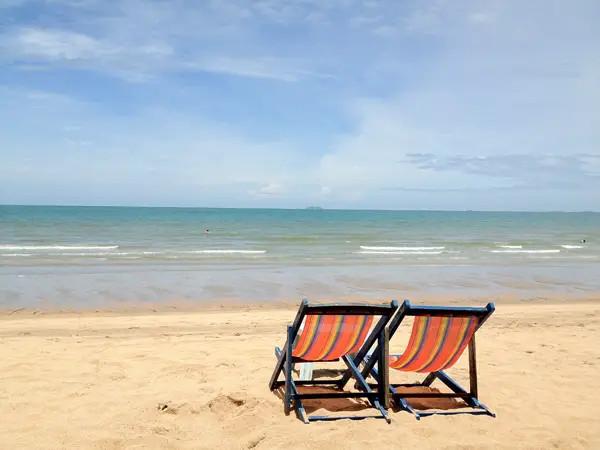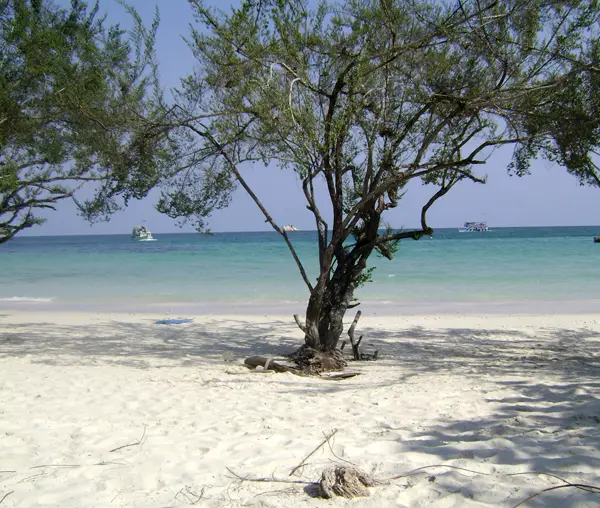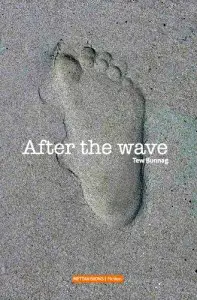 There is a reason why the word ‘tsunami’ is of Japanese origin: Japan is the nation with the most recorded tsunamis in the world, going all the way back to the 7th century. The word can literally be translated as “harbour wave” with ‘tsu’ meaning harbour and ‘nami’ standing for wave. Unfortunately for the Japanese, history repeated itself quite recently, when on March 11, 2011 an earthquake, also known as the 3.11 Earthquake, ravaged the western coast of Japan, taking lives, destroying homes and businesses, and creating a nuclear disaster.
There is a reason why the word ‘tsunami’ is of Japanese origin: Japan is the nation with the most recorded tsunamis in the world, going all the way back to the 7th century. The word can literally be translated as “harbour wave” with ‘tsu’ meaning harbour and ‘nami’ standing for wave. Unfortunately for the Japanese, history repeated itself quite recently, when on March 11, 2011 an earthquake, also known as the 3.11 Earthquake, ravaged the western coast of Japan, taking lives, destroying homes and businesses, and creating a nuclear disaster.
While the eyes of the entire world are focused on how the Japanese government is dealing with the nuclear plant at Fukushima which was crippled by the tsunami, we should also not forget that this year, for 14 countries in South and Southeast Asia, it is also the 9th anniversary of the 2004 Indian Ocean tsunami which killed almost a quarter of a million people and created billions of dollars in damages. The tsunami struck on Boxing Day, December 26, and for Thailand, the fourth hardest-hit country (after Indonesia, Sri Lanka and India), it meant over 5000 deaths with thousands still missing.
While all publishing houses that are interested in the devastation of these tsunamis appear to be concentrating all their resources on publishing books about the 3.11 Earthquake in Japan and its consequences in the world’s political nuclear agenda, there are still books out there which address the physical and psychological damage that the 2004 tsunami has caused along the Thai Andaman Coast.
One such book is After the Wave. Short Stories of Post Tsunami on the Thai Andaman Coast by Tew Bunnag, a small collection of six short stories the writer has penned based on his personal experience when working with the poorest communities and those affected with HIV in the tsunami affected areas in Thailand. The book was initially published in 2005 by Post Publishing and, more recently, in 2010, by Metavisions, a small independent publisher, which has reprinted it under the simpler title of After the Wave.
Cambridge educated, Tew Bunnag was commissioned in 2005 by the BBC to write a short story to be broadcast on BBC Radio 4 on the first anniversary of the 2004 tsunami. It was this story, “Lek and Mrs. Miller,” that opens the book. It is a powerful and emotional story about the emptiness people who lost family members in the tsunami felt even months after the reconstruction process had started. Lek, now living in a temporary housing estate, is the son of a fisherman and has lost everything in the tsunami, including his father and brother.
Working the night shift at a still under-construction resort in Phuket, Lek feels intrigued by Mrs. Miller’s behaviour and demenour: “her composure and the sadness that enveloped her like a transparent veil stirred in him a mixture of curiosity and protectiveness.” On her last day on the island, before returning to London, Lek gathers the courage to approach her and, although he doesn’t fully understand what she says, he realizes how much she misses the family she had lost in the tsunami.
“Lek and Mrs. Miller” is a touching story that proves how much both the local population and the foreign tourists had all been affected on a physical and emotional level by the 2004 tsunami.
In “A Simple Mistake,” the second story in the collection, Tew Bunnag’s fiction centers around the Thai’s belief in ghosts and the supernatural. After the tsunami had driven all the tourists away, Noi Chang, a seelaw driver from Phuket, can barely make a living driving his small taxi. One evening, he picks up a foreign couple who hire him to take them to the city but, while they stopped at a market by the road, the foreigners disappear without anyone else even seeing them.
Noi Chang is certain that they were just two ghosts drifting around and whose physical bodies have died during the tsunami. But, when this supernatural event ends up in the national newspapers and on TV shows, his life changes. Fame brings him more customers and thus a steady increase in his monthly income but Noi Chang soon regrets his rise to fame as things start spiraling out of his control.
“Samnieng’s Mixed Blessing” gives readers a glimpse into the life of poor villagers who live by the coast of Phuket and their struggle to make ends meet in a world where teenagers quit school at an early age in order to start work so that they can financially help their parents. All too often we see such teenagers getting married and having children too early in life, only to continue living in poverty. The irony of living in poverty on one of the most pristine beaches in the world, where foreigners pay vast amounts of money to come and visit, is not lost on the characters who are baffled by the amount of money some tourist spend.
And then the tsunami hits the coast and Samnieng has to move to several temporary shelters, trying to stay strong and keep a positive mindset even in the face of so much destruction. Although sick with the HIV virus, widowed and without any means of survival, Samnieng finds the strength to go on fighting for the sake of her three daughters. But there is hope for her and, towards the end of the story, an uplifting mood crawls through the pages of the book and a ray of happiness shines over Samnieng and her family.
The life of Charoon and Sueb, two lovers who had known each other since they were both schoolboys is re-lived through Charoon’s eyes in “Closure.” Charoon misses out on their planned trip to the south of Thailand and thus has to live with the guilt that his lover died while he stayed alive. Guilt, sorrow and loneliness are feelings Charoon has to put up with for a whole year before he gathers the courage to make the trip to the Andaman Sea and retrace Saeb’s last moments.
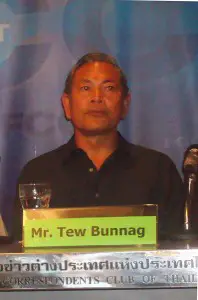 Tell-tales of the destruction he had seen on TV are everywhere and the fateful day of December 26th is still on the minds of many locals: “she [a waiter at a resort] told him in trembling voice how she had stood on one of the upper floors watching it [the wave] come in and catch the people who were on the beach, how she saw children dashed against trees and buildings and how afterwards she had to walk past all the bodies which to her amazement had all been stripped naked by the wave and how days later she had come to help with the clean-up and her hair and her clothes took on the scent of death which would not go away.”
Tell-tales of the destruction he had seen on TV are everywhere and the fateful day of December 26th is still on the minds of many locals: “she [a waiter at a resort] told him in trembling voice how she had stood on one of the upper floors watching it [the wave] come in and catch the people who were on the beach, how she saw children dashed against trees and buildings and how afterwards she had to walk past all the bodies which to her amazement had all been stripped naked by the wave and how days later she had come to help with the clean-up and her hair and her clothes took on the scent of death which would not go away.”
Even though Charoon does find closure to what had happened, his lover’s special place in his heart would never be taken by anyone else.
“The Reluctant Mahout” deals with the close relationship between Ai Nok, a Surin-native, who goes to Phuket to find a better life: “He wanted a decent job that paid him enough and gave him a future, not the back-breaking slog that his parents had to endure every day of their lives with little to show for it, and certainly nothing whatsoever to do with elephants.” Unfortunately for him, the resorts were already full with other village boys and girls from the northeast looking, just like him, for a better-paid job. Unable to find any other kind of employment, Ai Nok reluctantly accepts work at an elephant camp near Kamala beach.
Here, in no time, he becomes attached to Lila, a seven year old female elephant, with whom he tours the beaches and surrounding jungles to the delight of the foreign tourists: “Farangs had a soft spot for elephants.” Then the tsunami surges over the coast and, after that, things would never be the same for Ai Nok and Lila.
Tew Bunnag ends this collection of short stories with “The Final Message,” an epistolary story written from the point of view of one of the earlier characters in the book who had died in the tsunami. The ghost sends his lover a message explaining a few things that he needed to clarify before the ghost could find peace and enter infinite nothingness. The story gives meaning to the tsunami survivors who had lost loved ones but who must find the strength to go on living and rebuild their lives from total scratch.
The short stories make beautiful cross-references with characters in seemingly other unrelated stories in the collection, giving After the Wave the feel of a book that does not retell only the fictional lives of tsunami survivors but rather those of a whole community of both grieving locals and foreigners who had survived or had lost their loved ones during the Boxing Day tsunami. A similarly (and successful) attempt at showing the physical and physiological damage of the 2004 tsunami was made with the 2012 movie The Impossible, in which Naomi Watts and Ewan McGregor played the characters of two parents who tried to reunite their family.
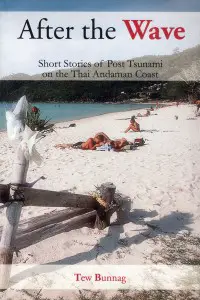 A recurring theme in After the Wave is the problems the survivors of the tsunami had when dealing with the authorities when the reconstruction process began. As many families had no land deeds to the properties they had once inhabited, the government saw no legal means to let them resettle in the same areas, where far more lucrative resorts and housing complexes could be built. This was especially true for the Moken Sea Gypsies, an aboriginal people who had been squatters on the Andaman Coast for many generations and who wished to return to (and rebuild) their villages by the sea.
A recurring theme in After the Wave is the problems the survivors of the tsunami had when dealing with the authorities when the reconstruction process began. As many families had no land deeds to the properties they had once inhabited, the government saw no legal means to let them resettle in the same areas, where far more lucrative resorts and housing complexes could be built. This was especially true for the Moken Sea Gypsies, an aboriginal people who had been squatters on the Andaman Coast for many generations and who wished to return to (and rebuild) their villages by the sea.
The importance Tew Bunnag places on the consequences of the 2004 Indian Ocean tsunami on the poor Thai communities on the Andaman Coast is evident in his choice of capitalizing the word “Tsunami” every time he used it in After the Wave, as if it was an idealized concept such as Truth, Love or Freedom.
Immediately after the tsunami, as director and advisor for several programs aimed at helping street children and AIDS patients with The Human Developmental Foundation, the author started working with under-privileged communities of Muslims, Sea Gypsies, New Thai and Chow Lay from the south of Thailand who had been directly and severely damaged by the tsunami. Although he has put a lot of personal and professional effort into his job, with proceeds from the sales of his books being used to help the survivors, his biggest regret is that NGOs could not reach out to the immigrant Burmese population as many were (and still are) illegal workers and didn’t want to seek assistance.
“The Tsunami was an extraordinary phenomenon that changed the lives of everyone in the whole affected region. It has left much sadness in its wake as well as puzzlement, and many difficulties and problems which will take years to resolve. I have told these stories to honour those who were killed, those who still grieve, and those who carry on courageously in their efforts to re-establish their livelihood,” concluded the author in his Introduction to After the Wave.
Since 2000, Tew Bunnag has been dividing his time between Spain and Thailand, from where he writes exclusively in English about the dichotomy between modernization and Thai traditional values. His other books include works of non-fiction, short stories and novels: Fragile Days, The Naga’s Journey, The House of Raja: Splendour and Desolation in Thailand’s Deep South, and Cloud Hands: The Essence of T’ai Chi Chu’uan. He has also contributed with short stories to Asia Literary Review and Bangkok Noir and is the founder of The European School of T’ai Chi Chu’uan. Many of his books have also been translated into Spanish.
After the Wave and Tew Bunnag’s other books are available as paperback and Kindle ebook from the publisher’s website, as well as at most English-language bookshops in Thailand.
A shorter version of this article was initially published in Mango Metro (December 2013, Vol.8, No.1)
Listen to the author himself reading from the book:
